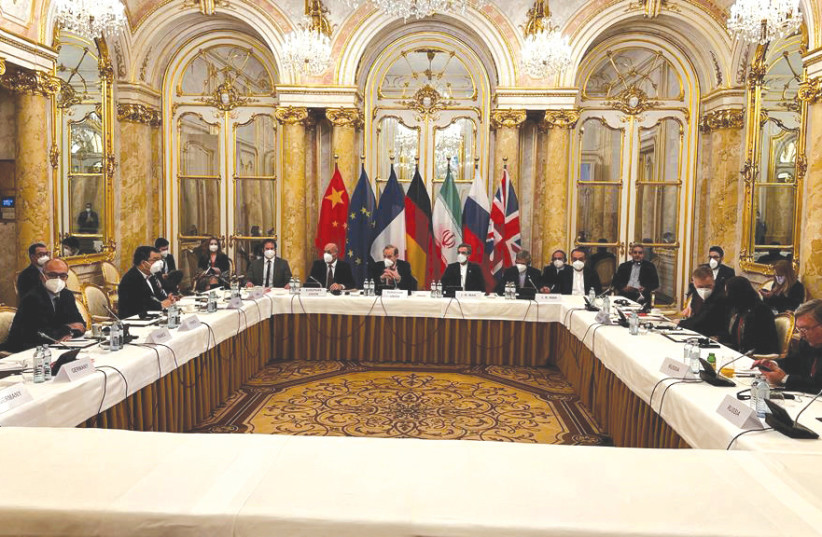International Atomic Energy Agency Director-General Rafael Grossi on Monday described aspects of a likely new Iran nuclear deal with the world powers while fielding more technical questions about what his agency will do in the event of such an agreement.
Asked about what additional activities his teams will need to undertake if there is a return to the 2015 JCPOA, rather than deflecting the questions as speculative, he gave a fairly detailed answer.
“We are talking to the Iranians all of the time in an informal way. We are exchanging some indications of what is going to be needed. My safeguards team will have to look at what is actually signed,” he said.
“It is a very complex agreement,” the IAEA chief continued. “It has a number of steps: a conclusion day, an implementation day, a preparation period, a reimplementation period, according to the draft text. It will take months for Iran to comply and for us to verify. The team has been preparing for that for quite a while.”
In addition, he said that he expected that in the event of a return to the JCPOA that the Islamic Republic would need to return to implementing nuclear rules associated with what is known as the Additional Protocol to the Nuclear Non-Proliferation Treaty.

“Well yes, the AP [Additional Protocol] is part of the JCPOA. It would be very difficult to have an agreement of the depth of the JCPOA only with a safeguards agreement. You have to have the ability to ask for access and to work in a more efficient way,” he said.
Further, he added, “To the best of my knowledge, the obligation of the Additional Protocol was and will be part of the JCPOA if it comes back to life.”
Moreover, he was questioned about what kinds of gaps his team would need to overcome to retrace what Iran’s nuclear program achieved over the last year when aspects of the inspections regime were rolled back.
Responding, he said, “The gap is a gap which is chronological. It is very important and also substantive. What has been happening over the past few months? It is not just quantitative, but there has also been qualitative progress in research and development in areas where the JCPOA explicitly forbade, or forbids if it comes back.”
Grossi said his teams would have a “huge” process to undertake both to cover these gaps and to ensure that Tehran would be coming back into compliance with a wide variety of nuclear restrictions.
Iran and the world powers have not yet reached an agreement on returning to the JCPOA, but negotiators have said a deal could be reached sometime this week.
Earlier on Monday, Grossi informed the IAEA Board of Directors about his new agreement with Tehran to potentially resolve all probes into its illicit nuclear activities by June.
He said that the Board received his update positively.
During the same press conference, Grossi said that Russia’s military assault on Ukraine’s Zaporizhzhia nuclear area led to the destruction of a neutron generator in one of the facilities on the campus.
His answer came in response to a question from the media about what would happen if Russia’s attack harmed the generator.
Until now it had been reported that Russian forces fired on the facility, but not the results of the attack.
“Apparently it has been destroyed,” said Grossi matter-of-factly, leaving the assembled media shocked.
However, he then tried to assure those present that the situation would not be a new Chernobyl-style disaster, saying, “The neutron generator facility had a very small inventory. It was a subcritical facility to use neutrons for scientific experiments.
“It was a relatively new one [facility], part of an operation between the US and the Ukraine from the Obama administration. It was a scientific institute,” he said.
Asked if this meant that Russia had attacked a facility protected by IAEA safeguard rules, Grossi paused, but then answered, “Yes, when there is nuclear material,” meaning since there had been nuclear material there, Russia’s attack violated IAEA international protection rules.
